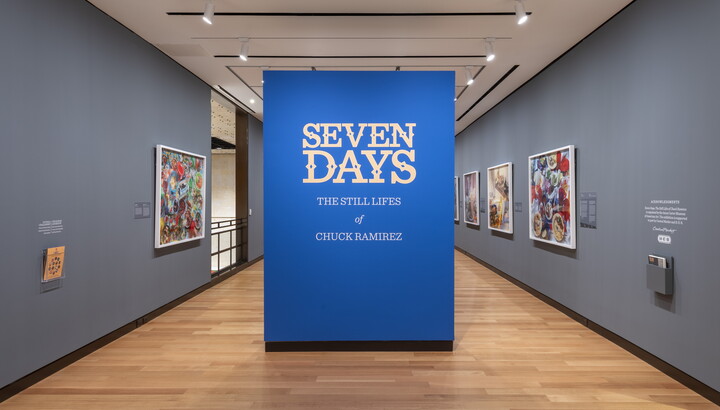The Carter Blog
Carter ARTicles
Drawn to Nature: The Family Research Project
Aug 21, 2024
It takes a lot of research to put on an art exhibition. There’s always so much to learn! As we prepared for Drawn to Nature to open, we wondered how we could get families more involved with the process of planning an exhibition. How could we peel back the curtain on what it’s like to research artworks? How could we provide an opportunity for families to practice research methods in fun, age-appropriate ways? How cool would it be if visiting families could work directly with curators, librarians, archivists, and educators to create a body of knowledge? During Spring Break 2024, we found out!
During The Family Research Project, researchers of all ages (and we do mean all ages) worked together to create a zine full of notes, drawings, questions, and fun facts about plants, animals, and the artists who paint them. Families rifled through books, periodicals, and online resources as they learned to sift through information, pursue their interests, and ask advice from professionals. Some of our young friends even used a copy machine for the first time!
At the end of the week, we were left with over 100 zine pages full of drawings and notes. Let's see what we can learn from their hard work!
Lesson 1: Learning often starts with the visual.
As with the examples below, many of our family researchers began by creating detailed drawings. Some were inspired directly by images found in Drawn to Nature, like James Prosek’s Brook Trout or John James Audubon’s Pteromys volucella, Gmel. Common Flying Squirrel. Others took off running with animals that had more relevance to them personally, like red snapper (illustrated and annotated by “Madler the Scientist,” a.k.a. Maggie Adler, the incognito former curator at the Carter).



Starting your research at home? Choose books with bold visuals, available in the Carter Library or your neighborhood library’s collection:
- Botanicum, by K.J. Willis, Illustrated by Katie Scott
- A River, by Marc Martin
- The Bluest of Blues: Anna Atkins and the First Book of Photographs, by Fiona Robinson
- Imagined Realism: Scott and Stuart Gentling
Lesson 2: It’s always worth a second (or third, or 10th) look.
When it comes to art and nature, there is always more to learn! Artists might revisit the same subject matter repeatedly, because there are always new ways to understand the world. Below, three artists (ages 6, 7, and 8) show us three different ways to understand crabs, inspired by Portunus quadriguttatus, the Swimming Crab (La cerique a quatre taches) and Ocypoda uca, the Fiddler Crab (L’uca de Marcgrave) by Christophe-Paulin de la Poix. Finn concentrates on the crab’s habitat in coastal water, Leslie shares enthusiastic questions, and Andrew highlights important information about animal behaviors. We learn something different from each zine entry!



When you’re on a mission to learn something new, make sure to ask yourself:
- Have I found my information from more than one trustworthy book, video, or website?
- Where could I find new or surprising information about my topic?
- What questions do I still need to answer?
Lesson 3: Researchers add their own (sometimes humorous) spin.
A researcher collects information from a wide array of resources and uses it to tell a new story. Some young researchers, like the ones below, demonstrated their findings by creating compelling combinations of imagery. Trenton noted similarities between the imagery from Sandy Rodriguez’s sketchbook JTree Studies 2021 and Georgia O’Keeffe’s paintings (on view in the galleries), combining those ideas in a study about sedimentary rocks, desert plants, and shadows. Jake observed that, despite differing habitats, a mako shark would be large enough to eat a brook trout if given the chance. Speaking of a preoccupation with eating, I couldn’t help but include an entry featuring detailed observations of sharks and a clam preparing to feast on several characters from the Super Mario Universe.



If you want to share what you know with your family, friends, or teachers, you might take a moment to add your own “spin” to your presentation!
- Add your own illustrations using your favorite crayons, paints, pencils, or modeling clay.
- Create a stop-motion video about your topic using a free app like Life Lapse Stop Motion or Stop Motion Studio.
- Create a music playlist that represents everything you’ve learned and have a research dance party!


